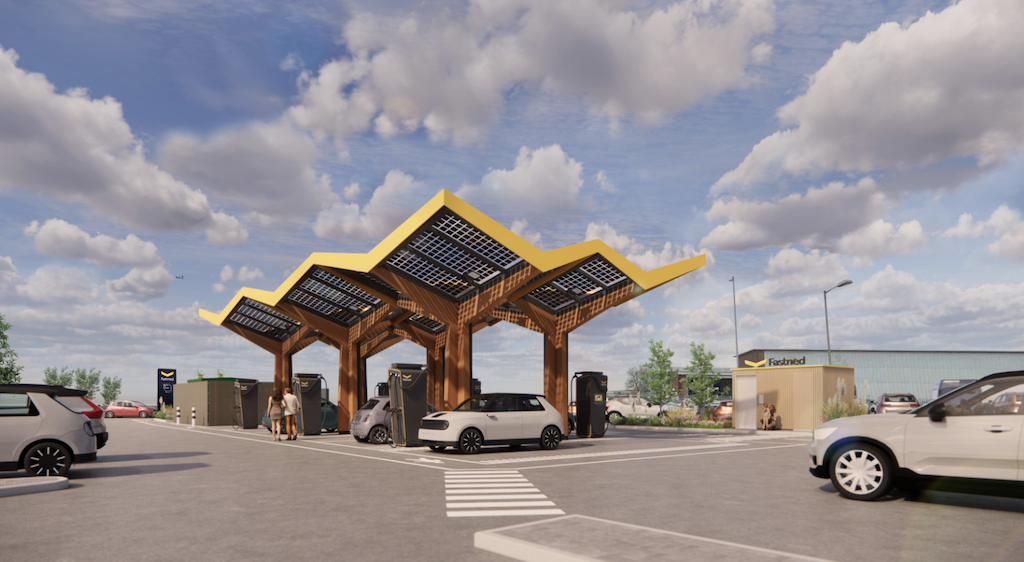In 2023, the global electric vehicle (EV) market has witnessed a transformative shift, driven largely by the proliferation of fast charging hubs. According to Bloomberg Green, the number of fast charging stations worldwide has increased by over 40% in the past year, highlighting the rapid expansion of urban EV infrastructure. This article explores how these fast charging hubs are revolutionizing the way we think about driving electric, reshaping urban landscapes, and what it means for the future of mobility.
The Rise of Fast Charging Hubs
What Are Fast Charging Hubs?
Fast charging hubs are centralized locations equipped with multiple high-speed chargers designed to quickly replenish EV batteries. Unlike standard home chargers, which can take several hours to fully charge an electric vehicle, fast chargers can provide up to 80% battery capacity in as little as 20 to 30 minutes, depending on the model. Brands like Tesla, with its Supercharger network, and Rivian, with its planned Adventure Network, are leading this charge, quite literally.
The Impact on Urban Infrastructure
The introduction of fast charging hubs is having a significant impact on urban infrastructure:
- Reduced Range Anxiety: One of the biggest hurdles for EV adoption has been range anxiety. Fast charging hubs mitigate this by providing convenient and speedy charging options.
- Economic Opportunities: According to a report by Reuters Mobility, cities that invest in charging infrastructure see an increase in local economic activity, as drivers spend time and money at nearby businesses while their vehicles charge.
- Environmental Benefits: Fast charging hubs facilitate the transition to cleaner energy sources, reducing urban pollution levels. The International Energy Agency (IEA) reports that widespread EV adoption could cut urban CO2 emissions by up to 50% by 2030.
The Technology Behind Fast Charging
How Fast Charging Works
Fast chargers use direct current (DC) instead of the alternating current (AC) used by standard home chargers. This allows them to deliver more power directly to the vehicle’s battery, significantly reducing charging time. Advances in battery technology, such as those developed by companies like BYD and Volkswagen, are also contributing to faster charging capabilities.
Innovations in Battery Technology
Recent developments in battery technology are making fast charging more efficient and accessible:
- Lithium-Ion Advancements: Improvements in lithium-ion battery design have led to higher energy densities and faster charging times.
- Solid-State Batteries: Companies like Nissan are investing in solid-state battery technology, which promises to revolutionize charging speed and safety.
- Battery Management Systems: Enhanced battery management systems (BMS) optimize charging cycles, prolonging battery life and improving performance.
Practical Tips for EV Owners
How to Make the Most of Fast Charging Hubs
- Plan Your Route: Use apps like PlugShare or ChargePoint to locate the nearest fast charging hubs along your route.
- Charge During Off-Peak Hours: Many hubs offer reduced rates during off-peak times, helping you save money.
- Keep Your Battery Between 20-80%: To maximize battery health, avoid letting the charge drop below 20% or exceed 80%.
Where to Find Fast Charging Hubs
Fast charging hubs are increasingly available in urban centers, shopping malls, and along major highways. Tesla’s Supercharger network is extensive, but other networks like Electrify America and EVgo are rapidly expanding. Look for hubs near amenities to make the most of your charging time.
The Future of Urban EV Infrastructure
Trends and Predictions
- Integration with Renewable Energy: Future charging hubs will increasingly integrate solar panels and wind turbines, making EV charging more sustainable.
- Wireless Charging: As technology advances, wireless charging pads may become commonplace, allowing for seamless, cable-free charging.
- Autonomous Charging Solutions: With the rise of autonomous vehicles, automated charging solutions are on the horizon, with robotic arms or self-parking capabilities.
Call to Action
Are you ready to embrace the future of urban mobility? As fast charging hubs continue to revolutionize the EV landscape, now is the perfect time to make the switch to electric. Explore the latest EV models, plan your charging strategy, and join the movement towards a cleaner, more sustainable future.
In conclusion, fast charging hubs are more than just a convenience; they are a catalyst for change in urban environments. By providing quick and reliable charging options, they are helping to accelerate the adoption of electric vehicles and paving the way for a greener tomorrow. As technology continues to evolve, we can only expect these hubs to become more sophisticated, further integrating into our daily lives and transforming the way we think about transportation. So, what’s your next step in this electric journey? Share your thoughts and join the conversation.

